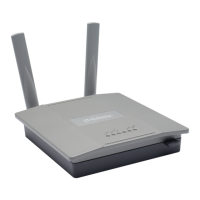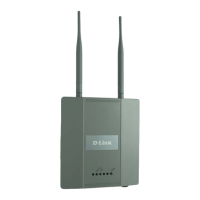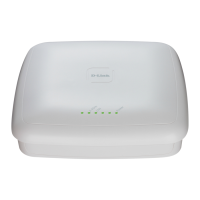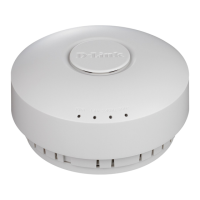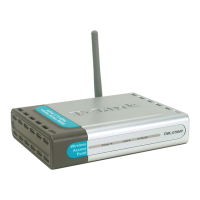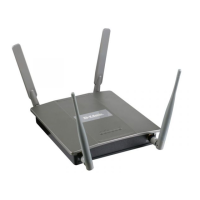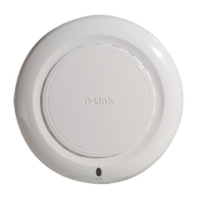Basic Setup
D-Link Unified Wired and Wireless Access System
Oct. 2015 Page 558
D-Link UWS User Manual
Table 330 describes the fields on the Wireless Network Configuration page. After you change the wireless
network settings, click Submit to save the changes.
Table 330: Wireless Network Configuration
Field Description
SSID Wireless clients identify a wireless network by the SSID, which is an alphanumeric
key that uniquely identifies a wireless local area network. The SSID can be up to
thirty-two characters in length, and there are no restrictions on the characters that
may be used in an SSID.
Hide SSID You can hide the SSID broadcast to discourage stations from automatically
discovering your access point. When the broadcast SSID of the AP is hidden, the
network name is not displayed in the list of available networks on a client station.
Instead, the client must have the exact network name configured in the supplicant
before it is able to connect.
Disabling the broadcast SSID is sufficient to prevent clients from accidentally
connecting to your network, but it will not prevent even the simplest of attempts by
a hacker to connect, or monitor unencrypted traffic.
Hiding the SSID offers a very minimal level of protection on an otherwise exposed
network (such as a guest network) where the priority is making it easy for clients to
get a connection and where no sensitive information is available.
Ignore Broadcast If a wireless client broadcasts probe requests to all available SSIDs, this option
controls whether the AP will respond to the probe request.
• Select this option to prohibit the AP from responding to client probe requests
• Clear this option to allow the AP to respond to client probe requests.
VLAN A virtual LAN (VLAN) is a software-based, logical grouping of devices on a network
that allow them to act as if they are connected to a single physical network, even
though they may not be. The nodes in a VLAN share resources and bandwidth and
are isolated on that network.
The D-Link Unified Switch supports the configuration of a wireless VLAN. You can
configure each VAP to be on a unique VLAN or on the same VLAN as other VAPs.
When a wireless client connects to the AP by using this network (SSID), the AP tags
the client’s traffic with the VLAN ID you configure in this field. By default, all networks
use VLAN 1, which is also untagged by default.
Note: The VLAN ID you configure in this field can be overridden by the VLAN ID
configured for the AP in the RADIUS server. In other words, if your network uses a
RADIUS server to assign wireless clients to VLANs, the wireless client uses the VLAN
ID from the RADIUS server and ignores the VLAN ID configured on the VAP.
L3 Tunnel The L3 Tunnel feature allows mobile stations to maintain their IP connections while
roaming from one access point to another access point even when these access
points are attached to different IP subnets.
Note: When L3 tunneling is enabled the VLAN ID is not used. In fact, the switch puts
the management VLAN ID, if any, on the tunneled packets.
Note: If the wireless network topology changes (for example, a DWS-4000 Series
switch reboots) while the L3 tunneling feature is in use, you should perform an ARP
refresh on wired clients to speed up the process of re-establishing connectivity to the
tunneled network.

